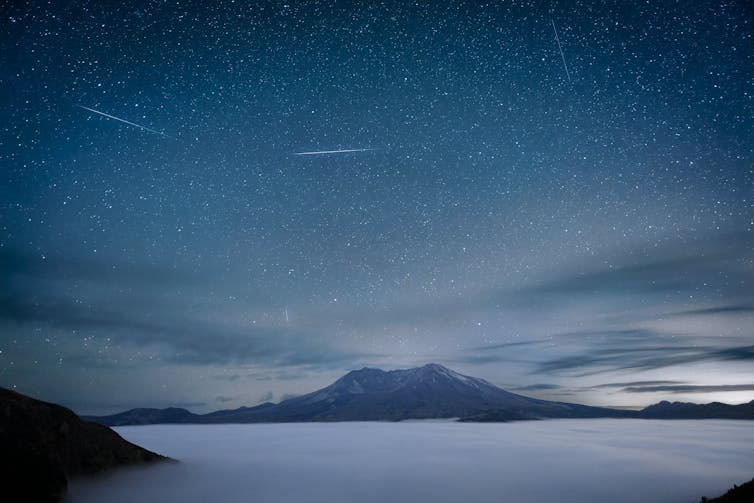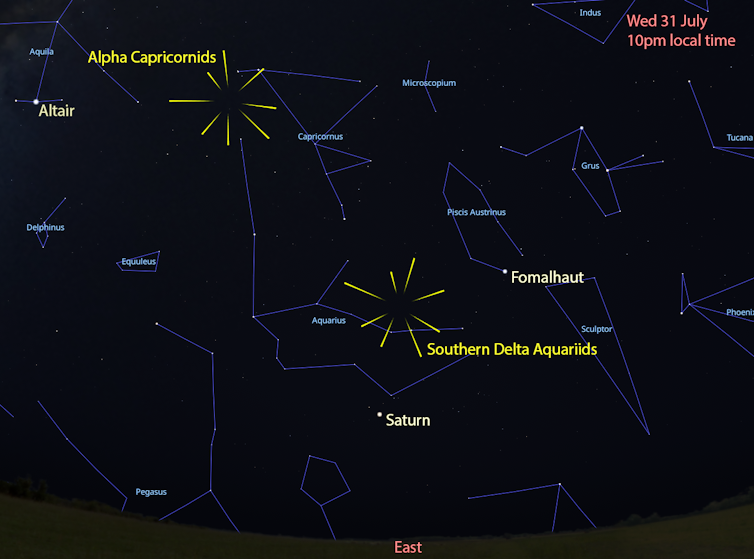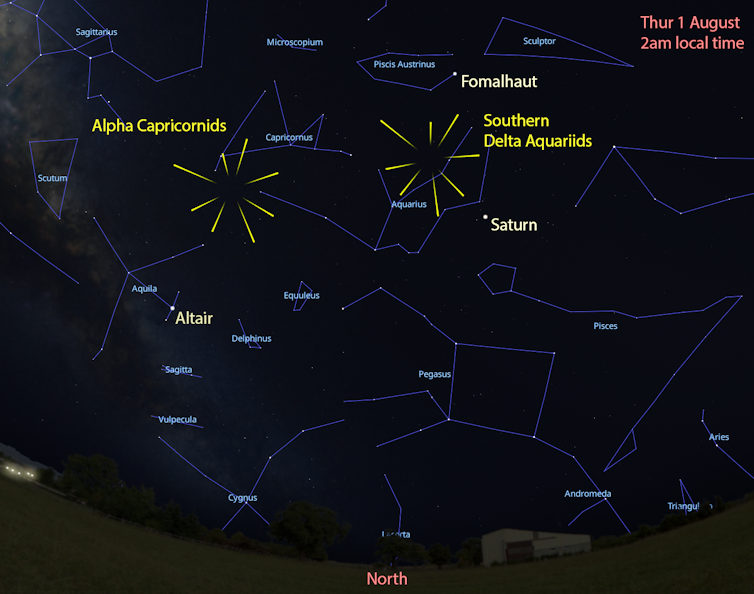On a clear night, if you look at the sky long enough, there is a good chance you will see a meteorite streak across the sky. Some nights, however, are more auspicious than others.
At certain times of the year, Earth passes through particularly dirty areas of its orbit, plowing through debris left behind by comets and asteroids. At that time, we see this debris crash into our atmosphere, and a meteor shower occurs.
Some meteor showers are more spectacular than others. The faster the debris moves or the more of it there is, the more meteors you’ll see. But in general, these showers are annual events, recurring every time Earth returns to the same spot in its orbit.
The end of July is one of those times when Earth passes through several debris bands in our solar system simultaneously.
Two of these showers peak around July 31. While neither of them ranks among the best showers of the year, taken together they can make for a pretty spectacle in the depths of our cold winter nights.
The Aquarids of the South Delta: the fastest
The first of the two meteor showers, and the most active, is the Southern Delta Aquariids. For Australian and New Zealand astronomers, they are the third most powerful meteor shower of the year (after the amazing Geminids in December and the Eta Aquariids, which peak in early May).
The Southern Delta Aquarids are dust particles from comet 96P/Machholz, a dirty snowball that travels in a highly elongated and inclined orbit in the inner solar system. 96P/Machholz is the largest object in a large debris stream that produces several meteor showers throughout the year.
The Southern Delta Aquarids are active for about six weeks, from mid-July to late August, and peak on July 31. On average, the shower is at its peak for about 48 hours. During this period, observers can see up to 20 to 25 meteors per hour under ideal conditions.

Diana Robinson/Flickr, CC BY-NC-ND
Although many of the meteors in this shower are relatively faint (and thus become harder to see if the Moon is above the horizon or if you’re observing from a light-polluted location), the shower is known for producing brighter meteors, especially around their peak.
Additionally, the Southern Delta Aquarids have produced at least two unexpected outbursts in the past, with increased rates observed in 1977 and 2003 – a reminder that meteor showers can sometimes deliver some nice surprises!
Alpha Capricornids: Slow, with occasional fireballs
The Alpha Capricornids are a significantly weaker meteor shower than the Southern Delta Aquarids, producing fewer meteors per hour. Even at their best, on the nights of July 30 and 31, it is rare for observers to see more than four or five meteors from the shower at any given time.
But where the Southern Delta Aquariids are numerous, fast, and often faint, the Alpha Capricornids are slow and often bright. Indeed, this shower has a reputation for producing spectacular, bright meteors and fireballs. Its meteors, while infrequent, are often the highlight of a winter observing night.
In 2010, two of the world’s leading meteorologists identified the origin of the Alpha Capricornid meteor shower: a faint comet called 169P/NEAT. They suggest it is simply a small piece of a larger object that broke apart between 4,500 and 5,000 years ago.
Currently, Earth is passing through only the outermost layers of a vast debris flow deposited by this ancient fragmentation. The scientists who identified it predict that in just 200 to 300 years, we will instead be passing through the very center of the flow.
If this happens, the Alpha Capricornids will one day become by far the best meteor shower of the year.
Where and when should I look?
This year, the peak of both meteor showers will occur midweek, on Wednesday, July 31. However, both showers will have relatively broad peaks and will produce a respectable number of meteors over a few days.
If you’re planning a camping trip on the weekend of July 27-28 or August 3-4, you may still be able to enjoy a decent show, especially in the early morning hours after midnight.
But to benefit from the best rates, it is best to leave on the evenings of Tuesday July 30 and Wednesday July 31.
From all over Australia and New Zealand, you can start observing from 9pm or 10pm, when the radiants of both showers (the place in the sky from which the meteors appear to radiate) rise towards the east. Initially, the shower rates will be low, but as the radiants rise in the sky, the meteors will be more visible.
The bright stars Altair and Fomalhaut are helpful guides. As a bonus, the planet Saturn is in the same part of the sky, shining as brightly as the brightest stars.

Victoria/Stellarium Museums
The longer you stay outside, the more likely you are to see meteors. As the night progresses, the radiants will move across the sky, rising higher and higher until they peak in the north after midnight. The best rates will be when the radiants are at their strongest: between about 11 p.m. and 3 a.m.
Get away from city lights. Our eyes need time to adjust to the dark, so it’s best to observe for at least half an hour, if not more, especially since the meteors aren’t evenly spaced. You could wait 20 minutes and see nothing, then spot several within a minute or two!
If you are lucky enough to find a place where the sky is dark in all directions, you should look northeast in the evening, north around midnight, and then northwest before dawn.

Victoria/Stellarium Museums
The darker the sky, the more you will see. At the height of both showers, the Moon will have almost disappeared, rising only a few hours before dawn.
So this year is the perfect time to get out and see an annual winter spectacle. And who knows, you might be lucky enough to catch a glimpse of a spectacular fireball caused by debris from a dying comet 5,000 years ago.